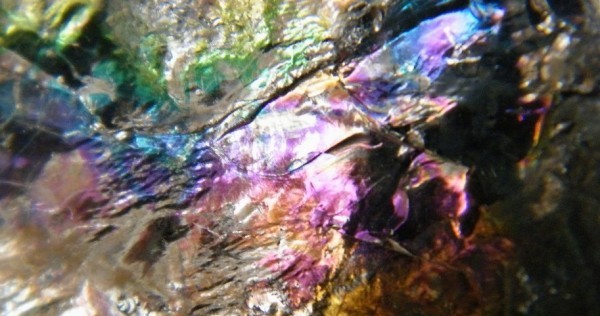
I like holding coal in my hand, especially a rock of anthracite, once called stone coal because nobody thought it could burn. The anthracite I am currently holding is hard, very hard, and not a bit dusty. Polished anthracite shines pretty as any gem. Around the turn of the 19th century, a United Mine Workers leader ordered a necklace for his wife fabricated from diamonds and polished anthracite. I want that necklace.
This lump of anthracite is the size of a Ping-Pong ball, but with jagged edges. Its planes and points darkly glint. Anthracite coal is as black as—well, as black as coal. Anthracite, formed under the pressure of mountain building, is the blackest coal, and the hardest. I got this specimen from somewhere near Wilkes-Barre, in the anthracite region of northeast Pennsylvania.
The coal in my palm represents plant life—the tree ferns, smaller ferns, club mosses, and tree-sized horsetails that lived 350 million years ago. It was warm then. Birds had yet to evolve. No birdsong. When a tree died, it fell over and contributed its organic body to vast peat bogs. The bogs sank and were washed by shallow seas and succumbed to the heat and pressure of the earth.
Coal is mainly carbon, and the carbon resulted from photosynthesis, the conversion of the sun’s energy into organic compounds that took place in the leaves of those ancient plants. The carbon in their leaves became the carbon in our coal.
We could talk about how dirty coal is to burn, how its sulfur content contaminates air and water, how my state of Washington has one remaining coal-burning power plant that should, undoubtedly, be shut down. But this is about the beauty of coal.
I keep a bowl of coal (this is southern Colorado bituminous coal) in my living room partly because it rhymes. Although perfect rhymes (bowl/coal; bright/light; batches of matches) might be questionable in poems, they coordinate nicely with rugs and curtains.
Who can grasp the concept of even one million years, let alone 350 million years? We Homo sapiens evolved a mere 200,000 years ago. Coal is older. But all life on earth is related. All life evolved from the first organic molecules—that is, from molecules that included carbon. Even we, ourselves, are largely carbon (61.7 percent, once you take away the water).
I don’t mind being distantly related to chimps, baboons, and orangutans. I don’t mind being distantly related to daisies. I don’t mind the thought that this lump of coal in my hand is what remains of my distant, quite-a-few-times-removed relatives. I don’t mind it at all. In fact, I rather like it.

